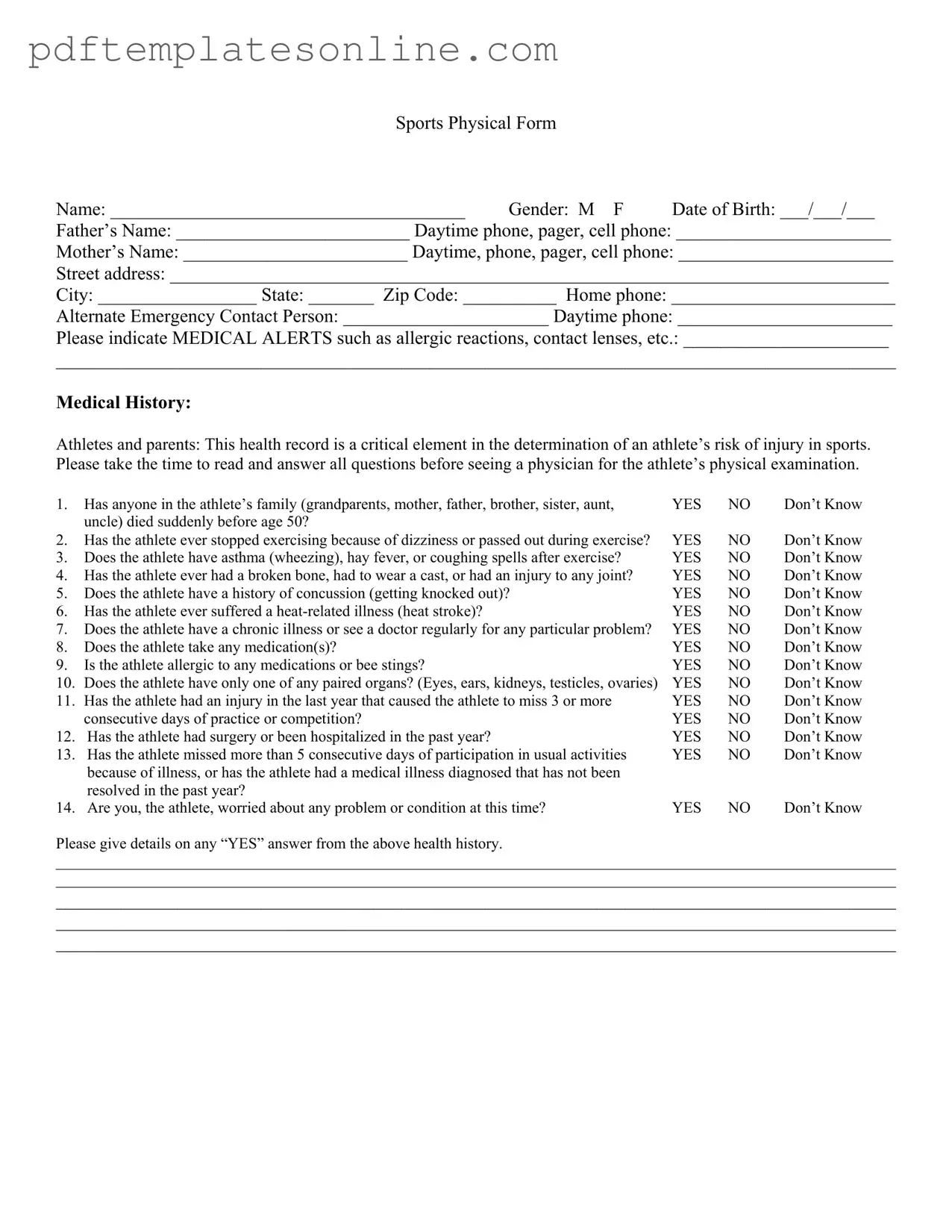Filling out the Sports Physical form is an important step in ensuring the safety and well-being of young athletes. However, mistakes can easily occur during this process. One common error is failing to provide accurate personal information. Missing or incorrect names, phone numbers, or addresses can lead to confusion in emergencies. It is essential that all contact details are double-checked for accuracy.
Another frequent mistake is neglecting to indicate medical alerts. Whether it’s allergies, asthma, or any other health concerns, this information is crucial for medical professionals. Omitting such details can jeopardize an athlete's safety during physical activities. Parents and guardians should take the time to thoroughly review this section.
Some individuals also misunderstand the medical history questions. Responding with “Don’t Know” instead of providing a clear answer can create uncertainty. If there is any doubt about an athlete's health history, it is better to consult with a healthcare provider before filling out the form.
Additionally, people often overlook the importance of the athlete's recent health status. Questions about injuries, surgeries, or illnesses in the past year should not be taken lightly. Failing to disclose significant medical events can affect an athlete's ability to participate safely in sports.
Another common oversight is not providing details for any “YES” answers in the medical history section. This information helps physicians understand the athlete's background better. Without these details, a physician may not have the full picture necessary for a thorough examination.
Parents and guardians sometimes forget to include an alternate emergency contact. This omission can be critical in situations where immediate contact is necessary. It is advisable to list someone who can be reached easily and is familiar with the athlete's medical history.
Moreover, individuals may skip the physical exam section altogether. This part is essential, as it must be completed by a licensed medical professional. A signed and dated examination is a requirement for the form to be valid.
Some people might also fail to ensure that the physician's information is complete. Missing details such as the physician's name, address, or contact number can lead to issues with verification later on. It is vital to ensure that this section is filled out accurately.
Finally, a lack of communication between the athlete and their parents can lead to misunderstandings. Parents should encourage their children to discuss any health concerns openly. This dialogue can prevent important information from being left out of the form.
In summary, careful attention to detail is critical when filling out the Sports Physical form. By avoiding these common mistakes, families can help ensure that young athletes are well-prepared for a safe and healthy sports experience.
